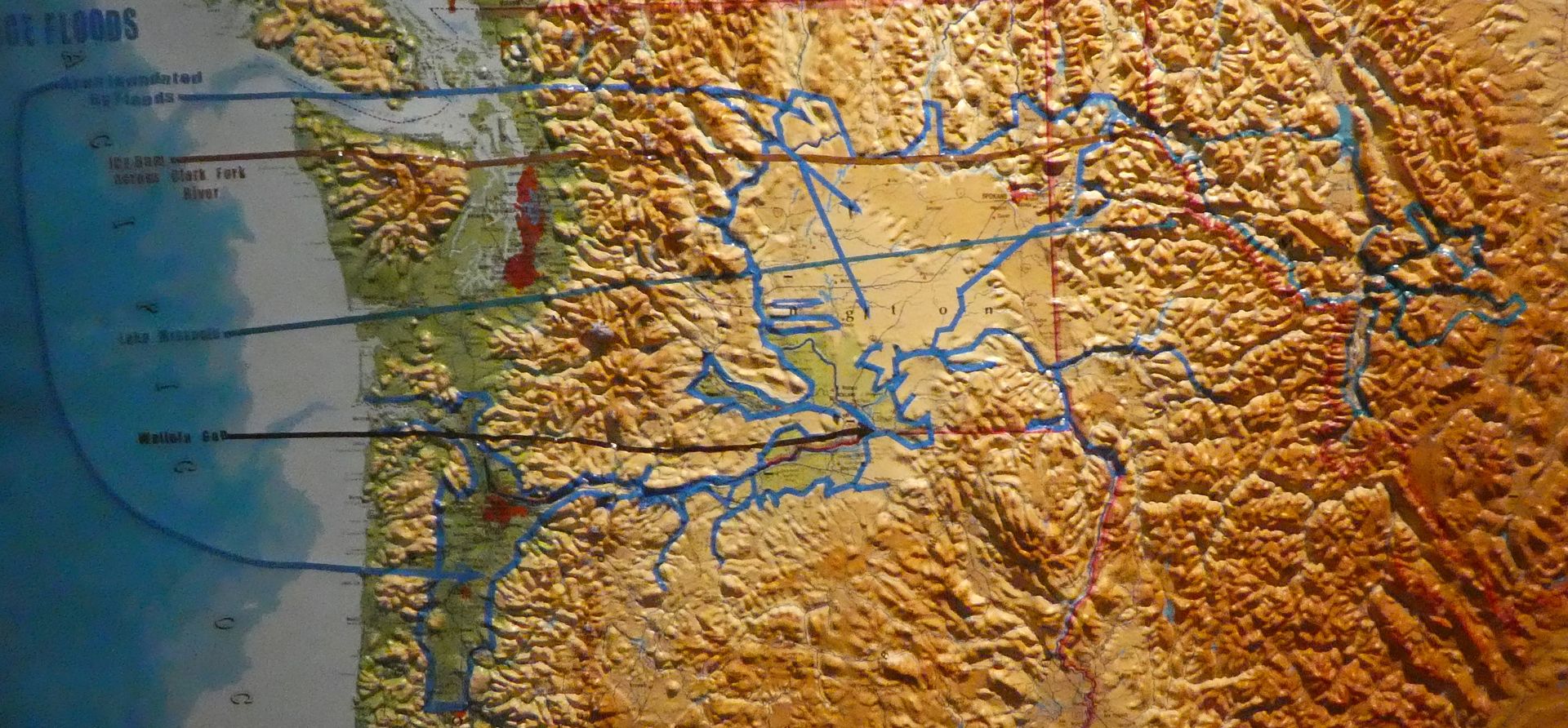The Hanford Reach is the last non-tidal, free-flowing section of the Columbia River. The Reach Museum opened in 2014 in Richland, Washington. The Museum focuses on the Hanford Reach area with exhibits on the region’s geology, wildlife, Native American history, American settlement, the Manhattan project (developing the atomic bomb), and recent environmental and conservation concerns. Shown below are some of the exhibits explaining the area’s geology.


 The map shown above shows the impact of Ice Age glacial lakes.
The map shown above shows the impact of Ice Age glacial lakes.
According to the display:
“As recently as 15,000 to 12,000 years ago, tremendous, nearly unimaginable floods scoured channels, back-flushed river and ponded temporary lakes across almost 16,000 square miles of the Pacific Northwest. The evidence for dozens of these cataclysms during the latest glacial episode appears in the distinctive geologic record of Montana, Idaho, Washington and Oregon.”

According to the display:
“Imagine molten lava spewing from deep cracks in the Earth’s surface and covering the land from western Idaho to the Pacific. Hundreds of lava flows erupted periodically between 17 million and 6 million years ago. Today, cooled lava (basalt) forms a basin stretching from the Bitterroot Mountains to the Cascades.”


 Shown above is a tray of basalt specimens.
Shown above is a tray of basalt specimens.
 Shown above is amygdaloidal basalt with Beach Agates.
Shown above is amygdaloidal basalt with Beach Agates.
 Shown above is spheroidal basalt.
Shown above is spheroidal basalt.
 Shown above is goethite basalt.
Shown above is goethite basalt.
 Shown above is spheroidal basalt.
Shown above is spheroidal basalt.
 Shown above is basaltic andesite column basalt.
Shown above is basaltic andesite column basalt.
 Shown above are: (4) “Ropy” pahoehoe basalt; (5) pahoehoe basalt; (6) pahoehoe basalt.
Shown above are: (4) “Ropy” pahoehoe basalt; (5) pahoehoe basalt; (6) pahoehoe basalt.
 Shown above is pillow basalt.
Shown above is pillow basalt.
Museums 101
Museums 101 is a series of museum photo tours of different displays. More from this series:
Museums 101: Clothing (Photo Diary)
Museums 101: Robots (Photo Diary)
Museums 101: The Railroad (Photo Diary)
Museums 101: The Hanford Reach Nuclear Facility (Photo Diary)
Museums 101: The Secret Life of an Artifact (Photo Diary)
Museums 101: Sawmill (Photo Diary)
Museums 101: Quilts (Photo Diary)
Museums 101: Music Machines (Photo Diary)


